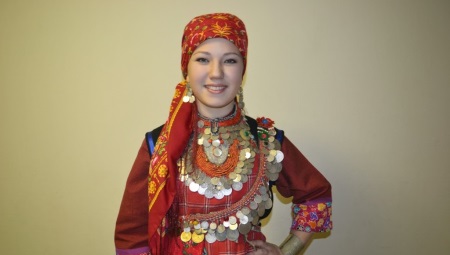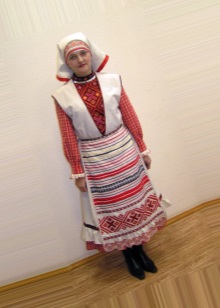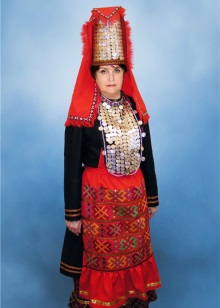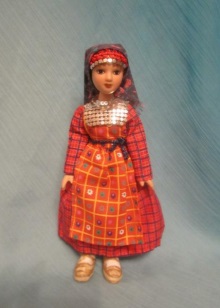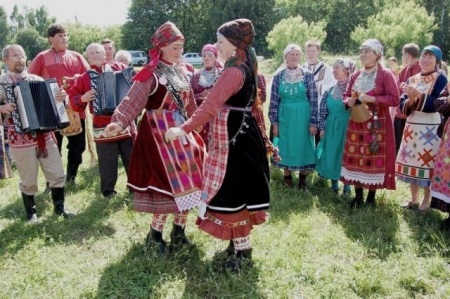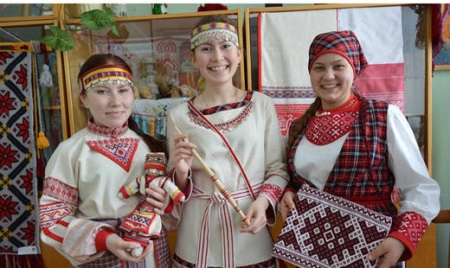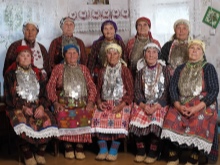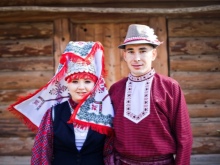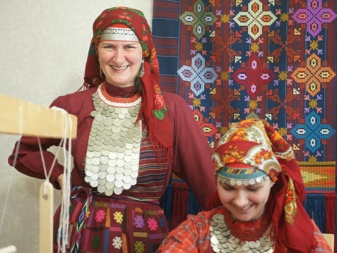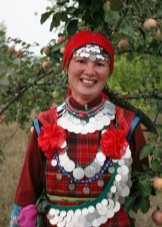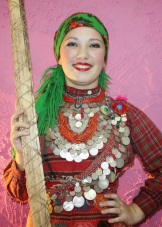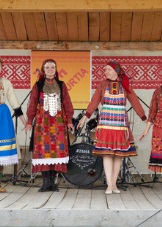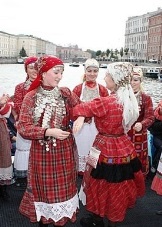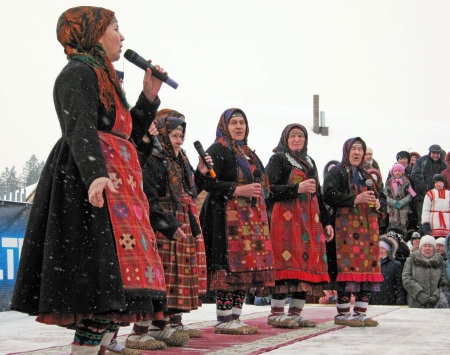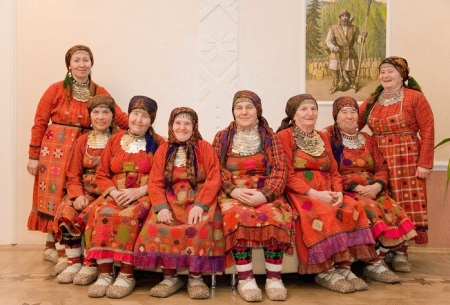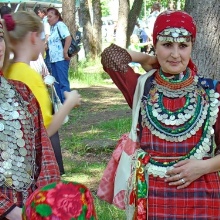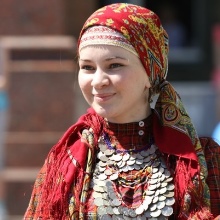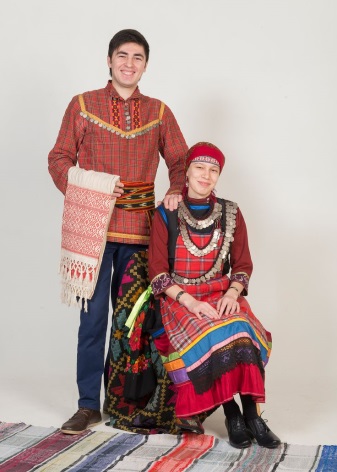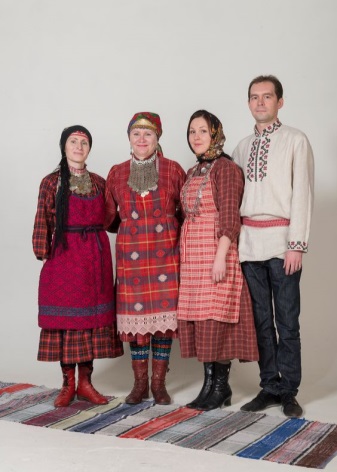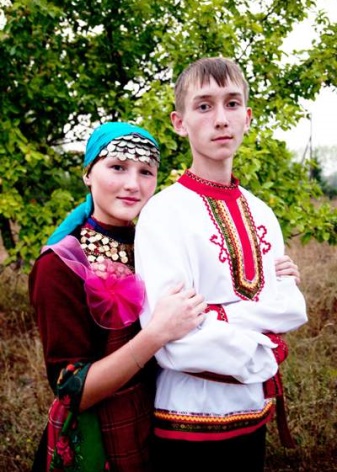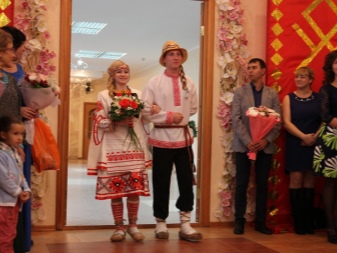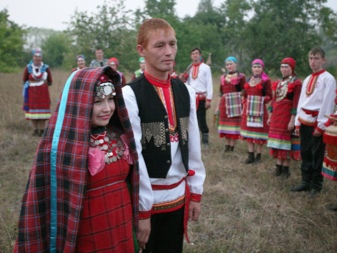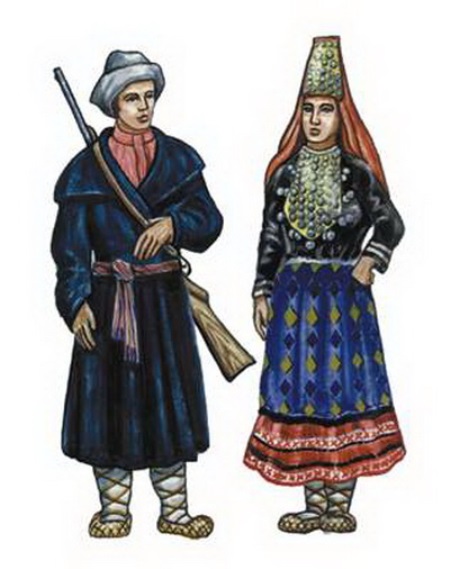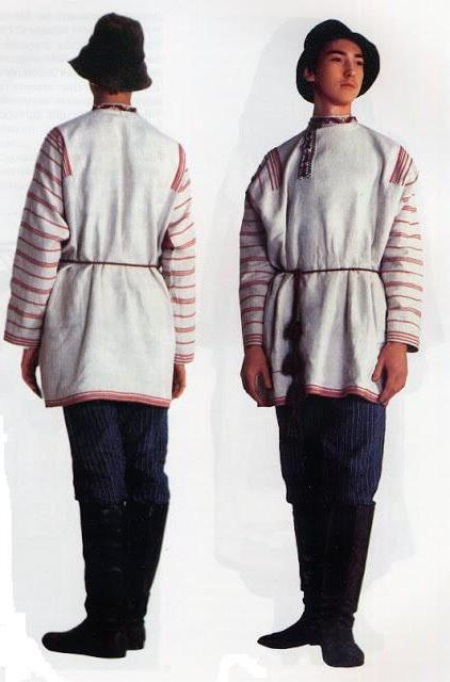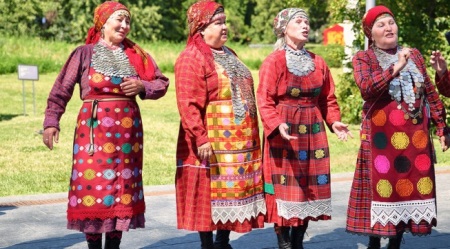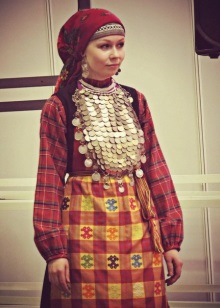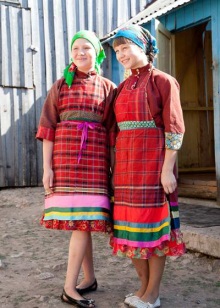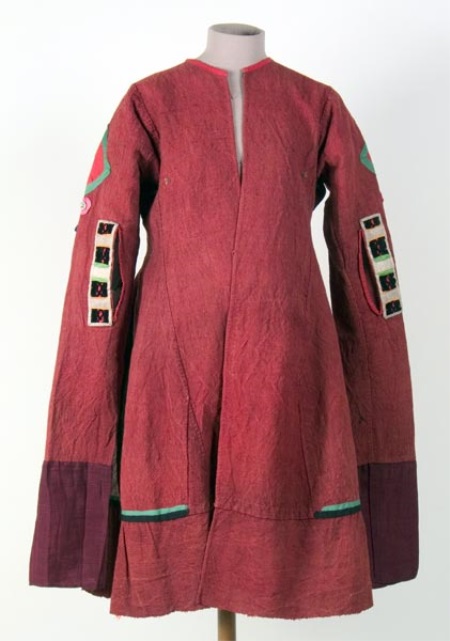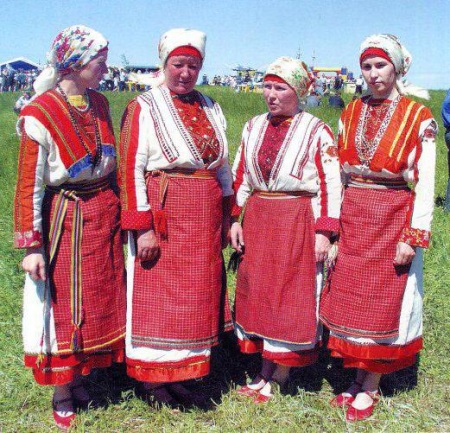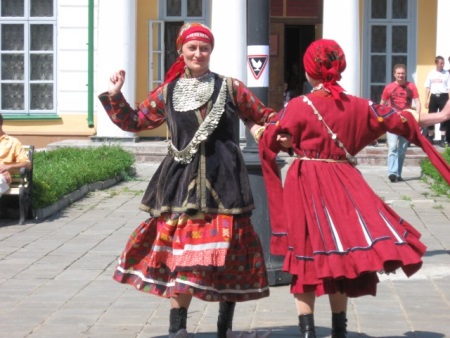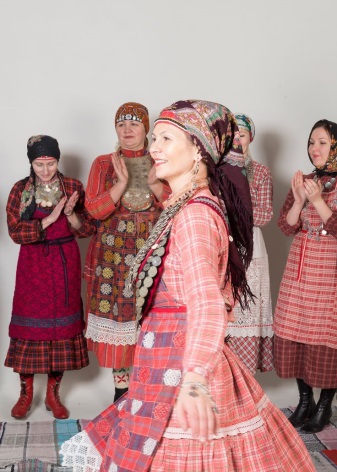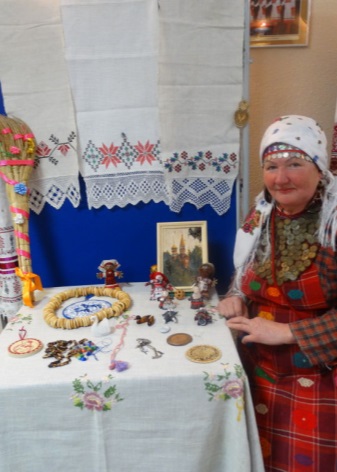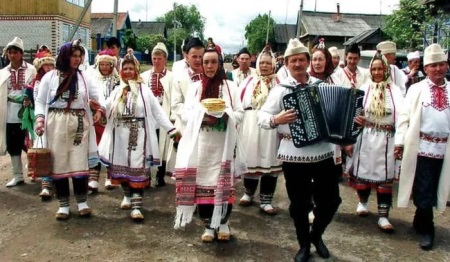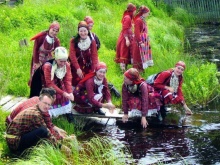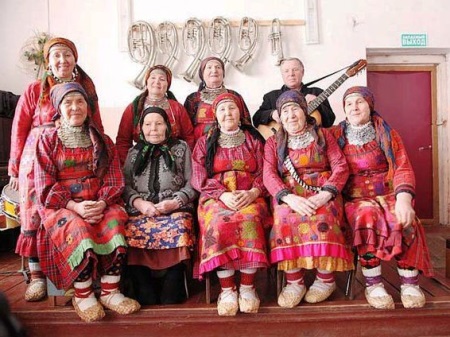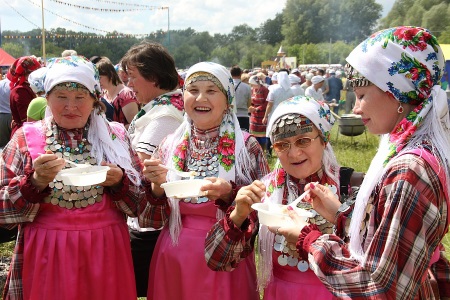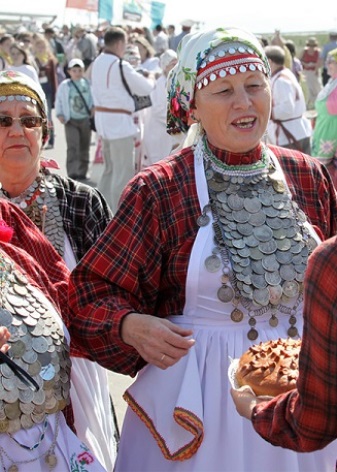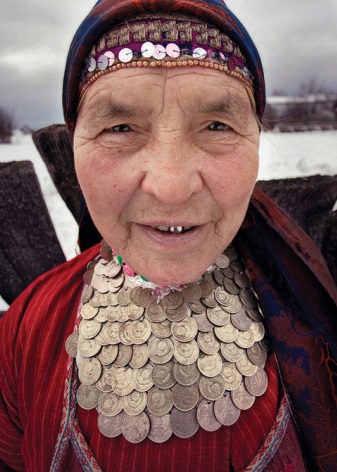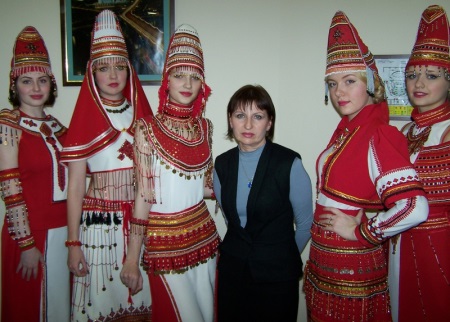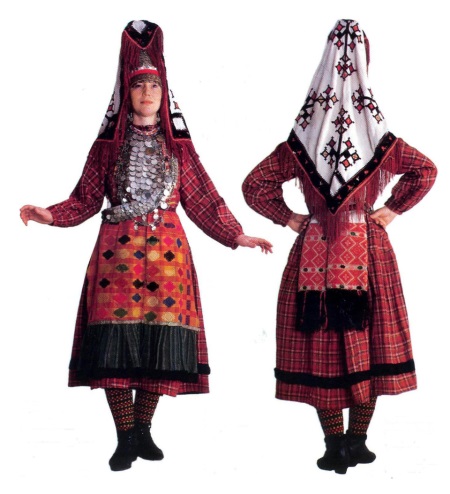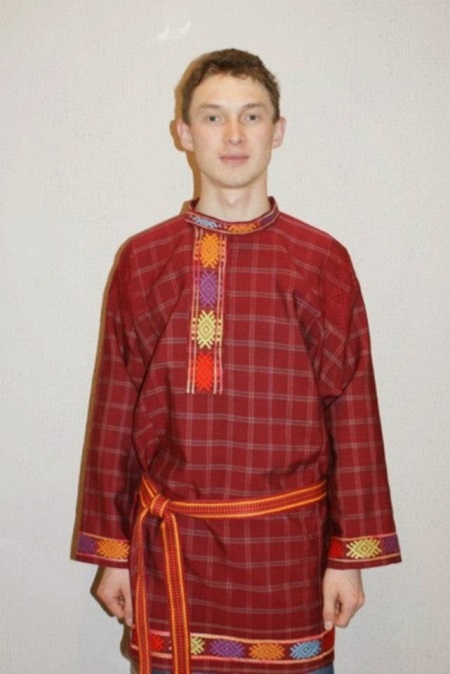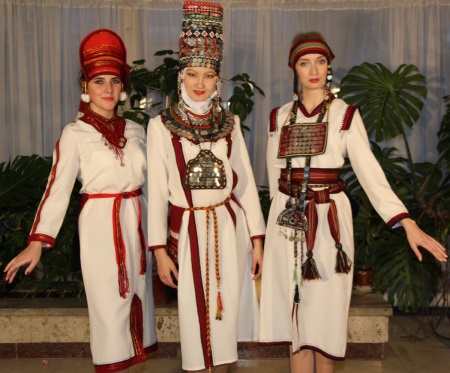The national Udmurt costume is a symbol of diligence and accuracy. To fill their chest with the dowry, girls from 6-7 years old learned to spin, and a loom was the main assistant in this matter. And so, by the age of 16–17, they became craftswomen and craftsmen of all trades; they could make both everyday dress and wedding attire. And anyone who wanted to marry should have had in store and presents for the future husband and his relatives. In general, in the chest of every self-respecting girl there were more than 40 different outfits.
History and features
The costume of the Udmurts is a guard and protection against evil spirits. As Udmurts are divided into northern and southern, and their costumes differ in color, elements and materials.
The first clothes for the child were the mother’s shirt for the daughter, and the father for the son. Up to three years old children were wearing older clothes. It was not so much a saving as it was to ensure the comfort of the child, because the worn and worn out clothes became soft and the new coarse fiber did not rub the delicate skin.
Previously, it was a simple shirt. Northern Udmurts used flax for its manufacture, and southern ones - hemp. Sheepskin, canvas and cloth are also used and made at home. To the cold used woolen threads. Of them weaved shortsdarem, which was worn over the shirt.
Over time, silk and satin were used. This fabric is used for holiday dresses.
After the war, with the advent of factory weaving, the national costume began to fade into the background. Handwork ceased to be appreciated and money entered into circulation.
An interesting feature of the costumes is that when the craftswoman finished her work, she made her mark from a bunch of threads (chuk). It was a kind of brand name. Copy such a suit was not allowed.
Today homespun canvases are again in demand and valuable, the story is being restored. Now every Udmurt woman of fashion has its own modernized version of the Udmurt national costume with its inherent color scheme and decor.
Colors and decor
The costume of the northern Udmurts contains three colors: white, black and red.
Southern Udmurts were distinguished by their bright, multicolored costumes. These included both white and red, and green, and brown.
Clothes and hats were decorated with beads, beads, coins, ribbons, embroidery with fragments of amulet and national patterns.
Embroidery on the shirts of men showed the nature of their activities and also had the role of guardian.
Men's suit
Men dressed simply. The traditional costume consisted of a shirt-shirt, striped pants and a belt. The shirt was white with a trim, then a small checkered homespun fabric appeared. Pants (erez) Udmurts were close in their cut to the factory. The winter version of the trousers was made of wool homespun cloth.
A festive version of the costume is a white shirt, with a red trim in the form of stripes on the sleeves, and along the bottom of the shirt. Pants monochrome black or blue. The wide belt is just red or iridescent woven.
In winter, over a shirt, they wore a fitted shorthair. In the cold wore sukman - caftan, or dukes. Over all this they wore sheepskin coats girded with wicker belts and belts. For long distances, there was also a long toe loop with a large collar.
The headgear was a hat made of cloth or a hat of felt sheepskin or wool (izy). Shoes were wicker made of bast - sandals, they were later replaced by boots, and in winter boots were rescued.
Woman suit
Women's clothing differed in several ways:
- place of residence (northern, southern);
- age of the owner;
- family status.
Northern Udmurtki adopted the clothes of Perm peoples. The basis of the costume of the northern Udmurka was a derem - a long tunic-like shirt. Over it, a kabachi was dressed — a rectangular bib with national embroidery, a shortdarem — a robe, and an azkyshet — an apron without a top, fastened on a belt, and a woven belt or belt with embroidery.
Kabachi was an element of clothing for married women; they were replaced by appliqué musarezés — breastplates made from pieces of fabric with embroidery, decorated with buttons and coins.
In winter, he was warming up the keelym shorthair - a caftan over a shirt and a sheepskin coat of red or black color.
The headdress combined several elements: a hat, a bedspread, and a headband. The basis was takya - a cap decorated with coins. For girls, there was a low Kotres takiya, but for girls older, she was already higher - Kuziales takiye. They also wore bandages decorated with ribbons and embroidery, and married women wore yyr kotyr or vesyk kyshet - embroidered scarves.
Southern representatives of the Republic of Udmurtia were distinguished by variegated fabrics. Their clothes are close to the Tatars and Bashkirs.
The basis of the suit - shorthair - a trapezoid dress with a narrowed sleeve. The edge was decorated with ribbons and ruffles. On the chest was a kykrak — a breastplate in the shape of a crescent with coins. Over wore ayshet - apron with a closed chest. Caestem - a sleeveless caftan and zybyn - a caftan warmed to coolness, and in winter they wore a sheepskin coat.
If everyday clothes were bright and colorful, the wedding dress was mostly white.
The headgear included caps, headbands, towels, ayshony — hats with high foreheads, scarves. Southerners wore sophisticated hats. On top of the headband, decorated with beads and ribbons, put on a scarf. At the wedding, the bride wore ayshon, and on top - sylyk - a wide embroidered canvas, decorated with fringe. The girl wore this kit until she became a mother; also married women wore an embroidered towel fixed on top with a handkerchief.
It was believed that how many children would be in a family depended on the number of cells in a Udmurk suit, the more the better.
Chugles were worn on their feet - stockings made from white or blue linen. On top was wound up with Binalton –blocks of white to the knee. In men, they were wider, later there were knitted long socks with bright patterns. Bast shoes were also considered traditional shoes for women; for holidays, they were decorated with feathers and beads, and later they were replaced with festive shoes. In winter, they put on felt boots.
Decorations
Women's jewelry vividly highlighted their mistresses. Bright bibs with coins served as a guardian for the hostess.
Headbands were decorated with bright ribbons, coins and beads.
The main material for jewelry was silver - bracelets, earrings, chains, rings. But the beads were not awarded such attention. But among the Udmurts were popular jewelry such as yyrpin - white shells, played the role of amulets. Such ornaments were passed on from senior to junior, being a family heirloom.
Married girls hid their hair under handkerchiefs and embroidered towels, but the girls decorated their crooks - bands, ribbons, narrow stripes with coins.
Southern Udmurtki decorated themselves with a footwear - a sling over one shoulder with sewn coins. But the northern added to it and red beads.
Men from jewelry wore only rings, but not simple, but with a generic seal.
The Udmurt national costume with complex elements and ornaments is being restored and redone today. The modernized versions turn into simple dresses, skirts and shirts, but the ornament and pectoral decorations are unchanged. At the moment, the costume of Udmurts is experiencing a new rise, and is becoming increasingly popular.
